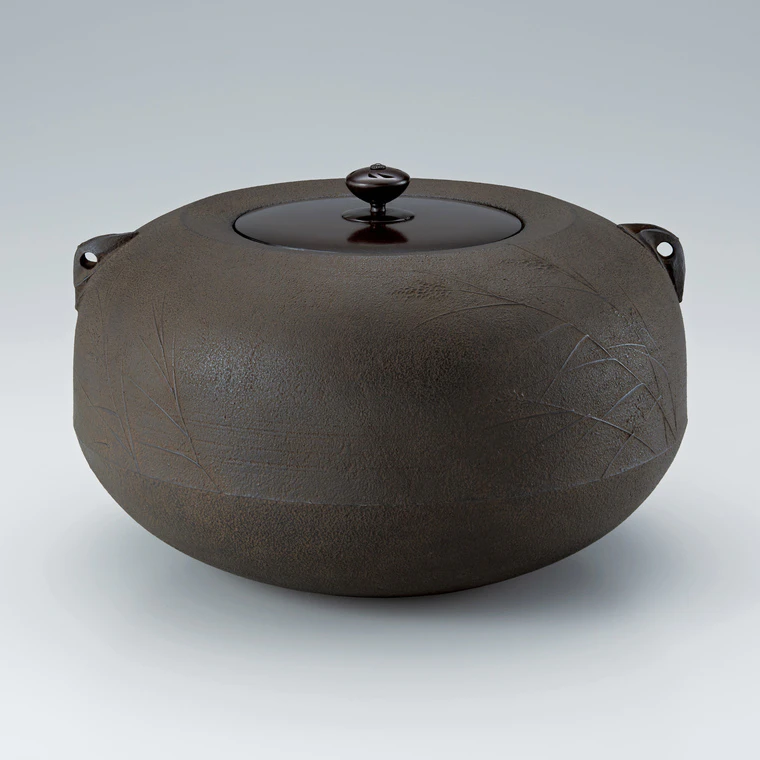Tea ceremony kettle with caved-in mouth and reedy waterside design.
H 17.2 / ø 26.5 cm,Year.2017Yukei Kakutani
1942 -- MetalworkLiving National Treasure
- Price Range Please Inquire
Description
-
CategoryMetalwork
-
DimensionsH 17.2 / ø 26.5 cm
-
Year presented2017
-
RarityUnique
Techniques Used
Clay mold casting
In clay mold casting (sōgata), a symmetrical mold is produced by rotating a template called a strickle board in a mixture of sand and clay to shape the walls of the mold. Clay mold casting is predominantly used to produce tea ceremony kettles and temple bells. After the piece is removed from the mold, it is heated and painted with lacquer (urushi) or a solution of iron, vinegar, and alcohol known as ohaguro (“teeth blackening liquid”) to produce a unique, dark finish.
Awards received
- The 64th Japan Traditional Kōgei Exhibition (2017)
- Japan Kōgei Association Important Intangible Cultural Property Holder Award

